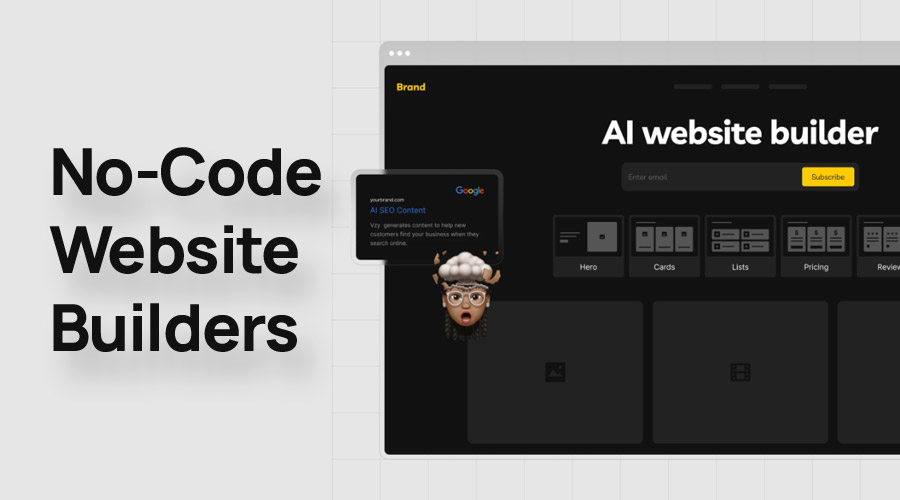Top 6 Cross-Platform Development Frameworks in 2024

In today’s digital landscape, businesses leave no stone unturned to reach their potential customers through mobile apps made for multiple platforms such as Android, iOS, and desktop.
Cross-platform app development has made it easy to launch mobile apps for multiple platforms using a single codebase. Top cross-platform app development frameworks have revolutionized the way mobile applications are built, allowing developers to create apps that run seamlessly on different platforms.
The growing demand for cross-platform apps has resulted in new tools emerging in the market. Apart from being cost-effective, cross-platform development also helps reduce the time taken to build apps without compromising on quality. With many frameworks available, it is crucial to choose the right one that will best suit your needs.
So, it’s important to stay updated on top cross-platform development frameworks in 2024. In this blog, we’ve put together a list of the best frameworks along with the features that make them great. Take a look at the list below;
Top 6 Cross-Platform Development Frameworks
1. Flutter
Flutter is a leading and popular cross-platform development framework released by Google in 2017. It is used to make applications for Android, iOS, web, and desktop using a single codebase. To build applications with Flutter, it is necessary to use Google’s programming language, Dart. The usage of Flutter has been trending over time in developing leading mobile apps.
Key Features of Flutter
- Hot Reloading: Its hot reloading feature allows developers to view changes as soon as they are made.
- Rich Set of Widgets: Flutter offers a rich set of widgets to create a visually appealing and flexible user interface.
- Access to APIs: Allows developers to access platform-specific features and APIs directly.
- Native Machine Code: Apps built using Flutter perform excellently as they are compiled into native machine code.
Mobile Apps Made Using Flutter:
- Google Pay
- Alibaba
- PUBG Mobile
- eBay
2. React Native
React Native was created by Facebook (now Meta) in 2015 and it has been popular in the industry for being one of the leading cross-platform development frameworks. This is managed by Meta and allows developers to create natively rendered mobile apps efficiently using React Native and Javascript.
Key Features of React Native
- Reusable Components: Allows developers to create reusable UI components for adequate development.
- Hot Reload: The Fast Refresh feature allows developers to see real-time changes.
- Compatibility: Allows developers to use the code everywhere on iOS and Android after writing it only once.
- API Access: Allows access to device features through Native modules and APIs.
Mobile Apps Made Using React Native
- Microsoft Office
- Skype
- Discord
- Tesla
Also Read: 13 Best Chrome Extension for Web Developers – Must Add in Chrome
3. Kotlin Multiplatform
Kotlin Multiplatform, developed by JetBrains, is popular for simplifying cross-platform development projects. It is used to share codes between the platforms Android, iOS, web, and desktop. As mentioned in the name, this framework entirely depends on Kotlin programming language. Kotlin Multiplatform allows developers to use as much code as they want.
Key Features of Kotlin Multiplatform
- Seamless Integration: It can be seamlessly integrated into any project. Kotlin mechanism allows developers to access platform-specific APIs.
- Allows Sharing: Developers can share codes across multiple platforms while keeping the benefits of native programming.
- Tool Support: Kotlin Multiplatform provides support for IDE plugins, a compiler, and a debugger to enable debugging.
- No New Language: You don’t need to introduce a new language to the codebase as you can reuse Kotlin code and expertise.
Mobile Apps Made Using Kotlin Multiplatform
- Netflix
- Baidu
- Forbes
- McDonald’s
- Philips
4. Ionic
Ionic, developed by Drift Co. in 2013, is an ‘iconic’ cross-platform development framework. It is a UI toolkit that helps developers craft effective mobile applications using web technologies like HTML, CSS, and Javascript. It allows integration for frameworks such as Angular, React, and Vue.
Key Features of Ionic
- Built-in UI: It offers a set of built-in UI components to create unique and attention-grabbing app designs.
- Effective Plugins: Ionic allows you to use plugins like Cordova and Capacitor to provide access to device features like a recorder, camera, GPS, and flashlight.
- Theming Choice: It provides theming choices and styles to customize applications.
- High-Performance: Ionic is popular for creating high-performance applications that can work on various platforms.
Mobile Apps Made Using Ionic
- MarketWatch
- Untappd
- EA Games
- BBC
- Sworkit
5. NET MAUI/Xamarin
NET MAUI (NET Multi-platform app UI) was released in 2011 and it was independent until Microsoft acquired it in 2016. It is an advanced version of Xamarin, popular for allowing developers to create cutting-edge cross-platform applications for Android, iOS, web, and desktop using .NET frameworks (C# and XAML).
Features of NET MAUI/Xamarin
- Native Feel: It uses C# language for cross-platform application development, which gives a feel and style that is like native.
- Hot Reload: With the help of .NET hot reload, the developers can modify code when the app runs.
- Access to Device Features: The cross-platform APIs provide access to device features like battery, accelerometer, etc.
- Visual Studio Integration: It allows integration with Visual Studio and Visual Studio Code for smooth and time-efficient development.
Mobile Apps Made Using NET MAUI/Xamarin
- NBC Sports Next
- The World Bank
- Irth Solutions
- Just giving
- Storyo
6. NativeScript
NativeScript is one of the top cross-platform development frameworks in 2024. It is popular among new-age developers for creating advanced applications using Javascript. As it allows developers to use languages that transpile to Javascript such as Typescript, they don’t need to know native languages. Furthermore, it uses frameworks like Angular and Vue.
Key Features of NativeScript
- Advanced Modules: It offers advanced modules for specific functions to solve complex app development issues.
- Replacement: Hot module replacement helps replace, update, and upgrade modules with less time consumption.
- Third-Party Solutions: It eliminates the need for third-party solutions by offering different plugins and already-built templates.
- Helps Small Companies: Nativescript uses web technologies like Javascript and Typescript. It helps small companies and startups to develop high-quality apps.
Mobile Apps Made With NativeScript
- PUMA
- Airbnb Design
- Strudle
- Breethe
- SAP
Conclusion
We hope this list has helped to choose the right framework for your business needs. As cross-platform app development gains popularity over time, it is crucial to focus on these top cross-platform development frameworks in 2024 to drive business growth.
These frameworks help developers to create high-quality and cutting-edge mobile applications that can seamlessly run across multiple platforms. As you start your own cross-platform app development journey, remember that you should not only focus on picking the right framework but you should emphasize finding the right cross-platform app development company to succeed.




